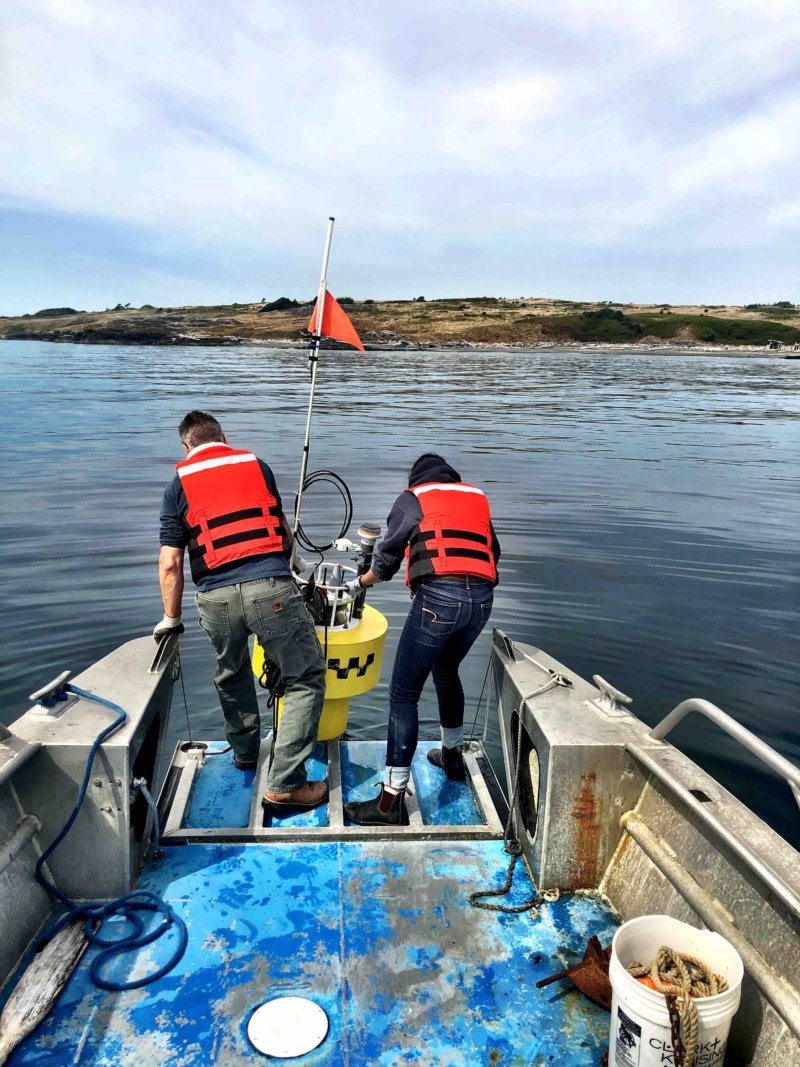The Coastal Acoustic Buoy: a new tool for remote and real-time acoustic monitoring
What do you do when client after client asks about real-time passive acoustic monitoring but are then shocked by the required logistics and cost of a cabled system or a large, long-term buoy-based system? Things get worse when the client also wants to localize any vocalizations and one detection system is just not enough to cover the monitoring zone of interest!
The answer is…you develop a CAB or Coastal Acoustic Buoy.
SMRU Consulting have collaborated with SAIL at the University of St Andrews and the Applied Physics Lab (APL) at the University of Washington to bring a new real-time, lightweight, cost-effective, battery-powered acoustic buoy to the market. Full-scale production is ongoing in SMRUC USA’s new Friday Harbour workshop, partly funded by a new 3-year US Department of Energy project to monitor for North Atlantic Right Whales and validate models of noise produced by offshore wind construction activities in the Atlantic.
CABs have a battery life of at least 14 days (far longer if you don’t need real-time updates) and a choice of up to three channels and various sampling rates (maximum 500 kHz) to provide multiple configurations (such as for localization) and maximum flexibility to monitor high frequency noise (such as echolocation clicks from dolphins and porpoises). In conjunction with PAMGuard software, marine mammal echolocation clicks, whistles and other tonal calls can be identified with existing detectors and classifiers designed for baleen whales, dolphins and porpoise. Modules can also be utilized to measure ambient noise levels in rms, 0-peak, peak-peak and SEL across a customisable range of frequencies and time scales, saving on post-processing analytical costs. Processed data can be sent real time using radio link to a base station or near real time via the cellular network. Raw acoustic data are stored onboard. The real-time ability not only allows real-time mitigation like shut-downs, but also ensures you are reliably collecting data 24/7. Using a lease-based costing concept means monitoring for longer than 14 days simply requires a quick swap around of units and the need to deploy 4-5 buoys to cover your zone of interest no longer results in sticker shock! Deployment and recovery simply needs two people and a small boat – the CAB only weights 45 kg! The CABs hardware is contained within a robust cylindrical pack that can be installed on existing large buoys, therefore enabling deployment in more offshore areas and for far longer periods.
To date, CABs have been successfully deployed in Hong Kong, for monitoring of Indo-Pacific humpback dolphins (SMRUC Asia Pacific have been heavily involved in a number of large construction projects) and on the west coast of North America, not simply for detecting killer whales and harbour porpoise, but to help Port of Vancouver ECHO Program understand source levels of various port activities (such as cruise liners under shore power, container ships berthing and float planes landing) and San Juan County to understand the contribution of small boats to ambient noise levels in a proposed marine protected area.
For more information contact cab@smruconsulting.com.




